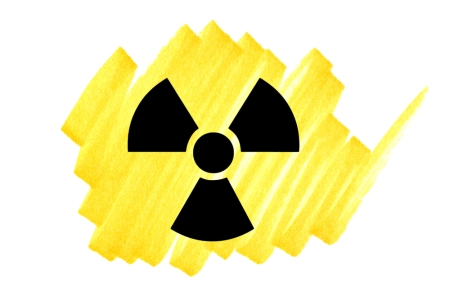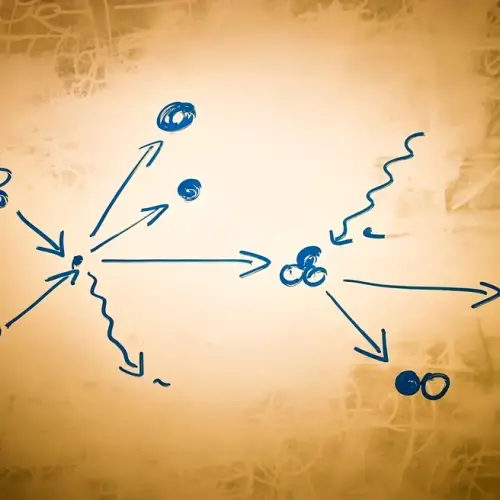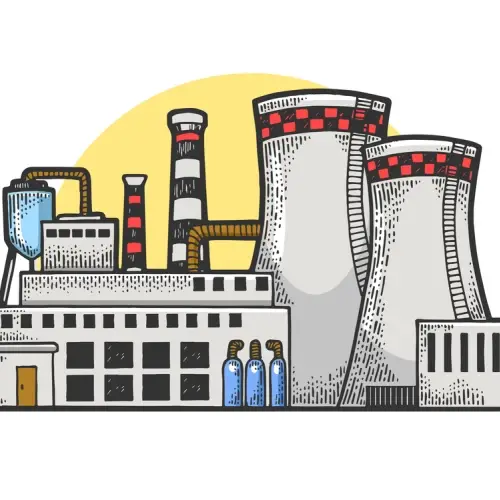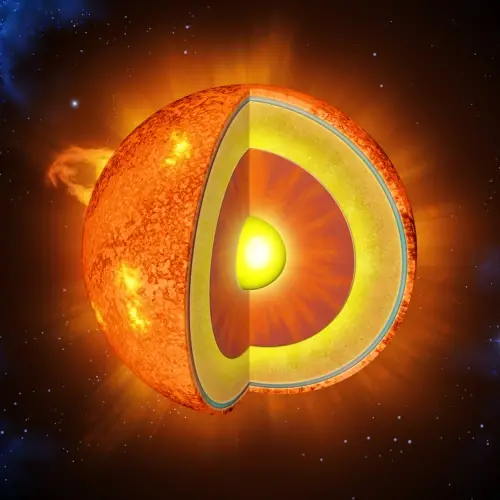
Nuclear energy can be a complicated topic, but I'll try to explain it to you in a simple and fun way!
Let's start by understanding what all the matter we know in the universe is made of, and then we'll look at how nuclear energy works and how it is used in our world.
What is everything we see made of?
 Imagine that everything you see around you—like trees, buildings, and even your body—is made up of tiny parts called atoms. Atoms are so small that you can't see them with your eyes, but they're in everything you know. Atoms are made up of even smaller parts, and at the center of every atom is a nucleus.
Imagine that everything you see around you—like trees, buildings, and even your body—is made up of tiny parts called atoms. Atoms are so small that you can't see them with your eyes, but they're in everything you know. Atoms are made up of even smaller parts, and at the center of every atom is a nucleus.
We could say that the nucleus is like the “heart” of the atom, and inside the nucleus live particles called protons and neutrons. These protons and neutrons are strongly stuck together thanks to a special force that keeps them together. This force is so powerful that, if it is released, it produces a huge amount of energy.
What is nuclear energy?
Nuclear energy is the energy stored inside the nucleus of atoms. When this energy is released, it can produce a lot of heat, and that heat can do many useful things, such as generating electricity. There are several ways to release nuclear energy, but one of the most common is called nuclear fission.
How does nuclear fission work?
 Imagine the nucleus of an atom as a balloon filled with energy. If we break this balloon, the energy bursts out, releasing itself explosively. Nuclear fission is something similar: if we “break” the nucleus of a large atom (such as uranium or plutonium), this nucleus splits into smaller parts, releasing a huge amount of energy in the process.
Imagine the nucleus of an atom as a balloon filled with energy. If we break this balloon, the energy bursts out, releasing itself explosively. Nuclear fission is something similar: if we “break” the nucleus of a large atom (such as uranium or plutonium), this nucleus splits into smaller parts, releasing a huge amount of energy in the process.
To do this, a nuclear power plant uses neutrons, which are tiny particles, to hit the nucleus of uranium atoms. When a neutron hits the nucleus, the nucleus breaks apart and releases a lot of energy in the form of heat.
This heat is then used to heat water and create steam. The steam drives a turbine (like the blades of a fan), and as the turbine moves, it generates electricity.
Where is nuclear energy used?
 Nuclear energy is mainly used to produce electricity.
Nuclear energy is mainly used to produce electricity.
Nuclear power plants work like any other power plant, but instead of burning coal or gas to generate heat, they use nuclear energy.
In this way, many cities and homes can have light and electricity without depending on other fuels.
Is nuclear energy dangerous?
Although nuclear energy has many benefits, it can also be dangerous if not used carefully.
When we break the nuclei of atoms, in addition to releasing energy, nuclear waste is also produced, which is radioactive material. These materials can be harmful to people and the environment, so they must be handled and stored with extreme care.
Another thing to consider is that if something goes wrong at a nuclear power plant, there can be an accident. A nuclear accident could release a lot of radiation into the environment, which can cause health problems and damage ecosystems.
Why is it used if it is dangerous?
The reason we use nuclear power is because, when managed correctly, it can produce a lot of electricity without polluting the air like coal or gas-burning power plants do.
Nuclear power plants do not emit carbon dioxide (CO₂), a gas that contributes to climate change.
Also, because it produces so much energy, a nuclear plant does not need much fuel compared to other energy sources.
Is nuclear energy renewable?
Nuclear energy is not considered renewable because it relies on materials like uranium that cannot be easily replaced. Once the uranium runs out, more of this energy cannot be generated without finding another material. Renewable energy, such as solar and wind energy, is different because it uses natural resources that do not run out, such as the sun and wind.
How is nuclear waste stored?
When uranium atoms break apart, the remains left behind remain radioactive and can be dangerous for thousands of years.
This nuclear waste is placed in special containers, designed to prevent radiation from escaping. In some countries, this waste is stored in underground sites, deep in the Earth, where it can remain safe for a long time.
Are there other forms of nuclear energy?
 Yes, in addition to nuclear fission, which is what we have explained, there is another type of nuclear energy called nuclear fusion.
Yes, in addition to nuclear fission, which is what we have explained, there is another type of nuclear energy called nuclear fusion.
Nuclear fusion is different, as instead of breaking apart the nuclei of atoms, it involves joining two nuclei of light atoms together to form a larger one. This process is the same as that which occurs in the sun and stars, and releases an enormous amount of energy.
Although nuclear fusion produces a lot of energy and is cleaner than fission, it is very difficult to do on Earth because it requires extremely high temperatures. Scientists are working on experiments so that, in the future, we can safely use nuclear fusion as a source of energy.